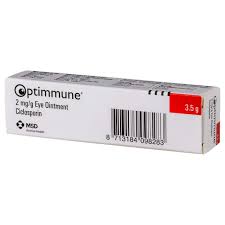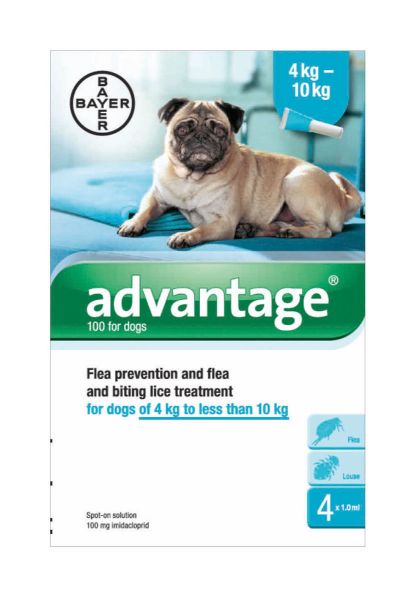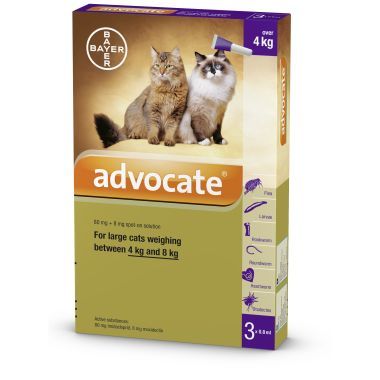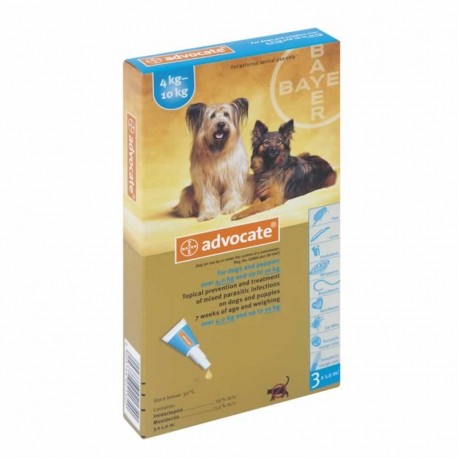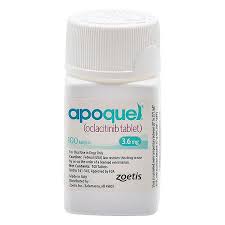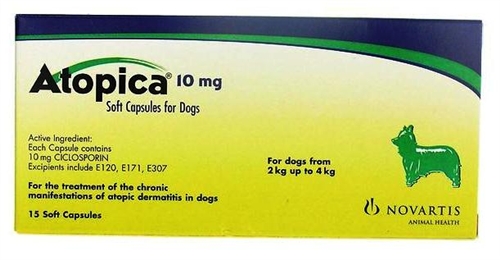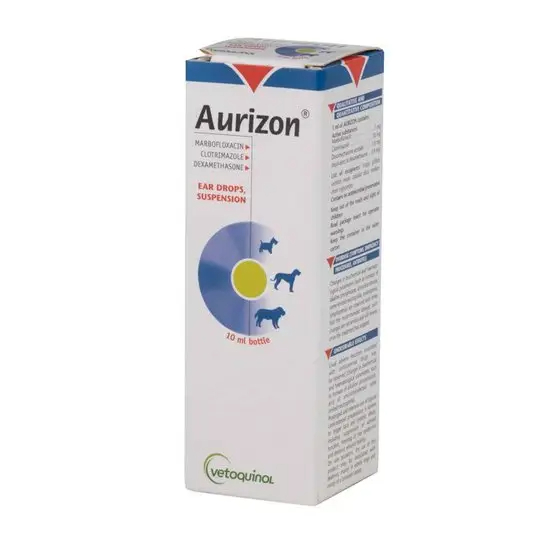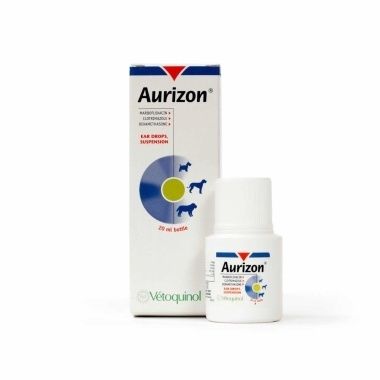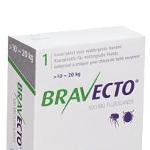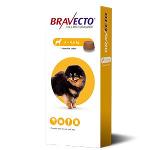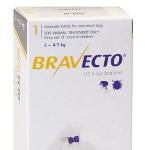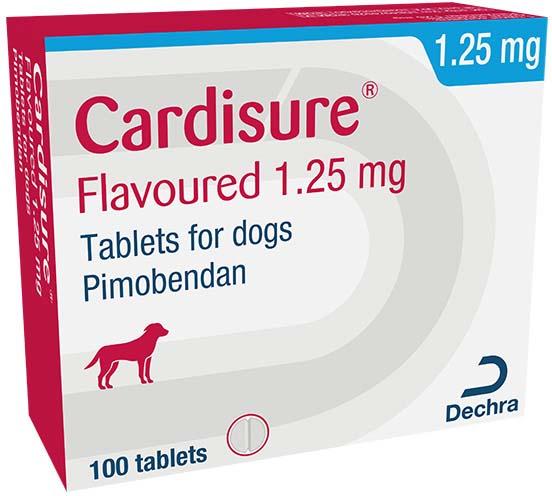Optimmune 2 mg/g Eye Ointment Species: Dogs Therapeutic indication: Pharmaceuticals: Antimicrobials: Topical preparations: Ear/eye/nose Active ingredient: Cyclosporine A Product:Optimmune® 2 mg/g Eye ointment Product index: Optimmune Qualitative and quantitative composition Active Ingredient Ciclosporin 2.0 mg/g (0.2 % w/w) For the full list of excipients, see Pharmaceutical Particulars section. Pharmaceutical form Eye Ointment A translucent colourless to light yellow ointment. Clinical particulars Target Species: Dog. Indications for use: For the treatment of chronic, recurrent conjunctivitis resulting from autoimmune disease of the eye. Indicated for the therapeutic treatment of Keratoconjunctivitis sicca (KCS, ‘dry eye’) and chronic superficial keratitis (‘pannus’) in the dog. May be used to augment topical corticosteroids or as a substitute for corticosteroids when these are contraindicated by corneal ulceration. Contra-indications: Do not use where fungal or viral infection of the eye is suspected. Special warnings for each target species: Clinical experience has shown than 90% of dogs affected with KCS will require life-long therapy. However, if therapy is maintained, the prognosis is good providing that regular clinical assessment is conducted. Similarly, chronic superficial keratitis may require continuous therapy although, as the condition is exacerbated by ultraviolet light, requirement for treatment may be suspended or reduced at certain times of the year. In the treatment of KCS, it is important that continuous treatment is maintained. Studies have shown that stimulation of tear production ceases within 24 hours of withdrawing treatment. Increase in tear production is expected within 10 days but may not be maximal until 6 weeks from commencement of treatment. Special precautions for use: For external topical use only. Care should be taken to avoid contamination of the contents during use. Replace cap between applications. Operator warnings: This product may cause skin and eye irritation. Avoid contact with the skin and eyes. Wear gloves when applying the ointment. Do not eat, drink or smoke while handling the product. Wash hands and contacted skin thoroughly with soap and water immediately after use of the product. In case of contact with the eyes, immediately rinse thoroughly with water. In case of accidental ingestion, seek medical advice immediately and show the package leaflet or the label to the physician. Squeeze the tube from the bottom and do not fold. Adverse Reactions: Slight eye irritation (e.g. eye redness, blepharospasm, conjunctivitis) has been reported in rare cases in the first days of treatment. If the irritation persists beyond 7 days, treatment should be discontinued. Inflammation and swelling of the skin of the eye lids have been observed in very rare cases. In very rare cases, pruritus, skin lesions and hair loss have been reported in the area around the eyes; this may be associated with overflow of excess ointment. Systemic reactions such as increased salvation, lethargy, inappetence and vomiting have been observed in very rare cases for which no confirmed conclusions concerning the causal relationship are available. The frequency of adverse reactions is defined using the following convention: - very common (more than 1 in 10 animals displaying adverse reactions during the course of one treatment) - common (more than 1 but less than 10 animals in 100 animals) - uncommon (more than 1 but less than 10 animals in 1,000 animals) - rare (more than 1 but less than 10 animals in 10,000 animals) - very rare (less than 1 animal in 10,000 animals, including isolated reports) Use during pregnancy or lactation: Do not administer to pregnant bitches. Studies to demonstrate safety in pregnant bitches have not been conducted. Interactions: None known. Amounts to be administered and administration route: For topical administration to the conjunctival sac. Apply a small amount of ointment (approximately ¼ inch or ½ cm) into the affected eye(s) every 12 hours. Any excessive discharge in the eye should be removed prior to application of the ointment by gently cleansing or flushing the eye with a suitable non-Irritating solution. Overdose: Inflammation and swelling of the skin of the lids has been reported in a very few cases. This seems to be associated with overflow of excess ointment. Reduction of the quantity of ointment has resulted in resolution. Withdrawal periods: Not applicable. Pharmacological particulars ATC Vet Code: QS01XA18 Pharmacotherapeutic group: Ophthalmologicals, other ophthalmologicals Optimmune is a pharmaceutically stable sterile ointment containing 0.2% Ciclosporin A. Administration of the ointment improves chronic diseases of the cornea and conjunctiva resulting from autoimmune disease such as keratoconjunctivitis sicca (KCS, dry eye), chronic superifical keratitis (pannus), and plasmacytic infiltration of the nictitans (‘plasmoma’) in dogs. To be applied topically to each affected eye. Ciclosporin A is an immunomodulator nonpolar cyclic oligopeptide with lacrimominetic and anti-inflammatory activities. It is produced by the fungus species Tolypocladium inflatum gans. It is a highly lipophilic drug and is absorbed into the cornea in high concentrations. Ciclosporin A also penetrates the lacrimal gland following administration. Ciclosporin A exerts its immunosuppressive and anti-inflammatory effects by inhibiting the production of cytokines which up-regulate T-helper cell activity. This restores the function of lacrimal acinar epithelium under autoimmune attack and reduces infiltration of ocular tissues by inflammatory cells. In addition to its immunosuppressive activity, Ciclosporin A exerts a direct lacrimomimetic effect by blocking the inhibition of tear production by prolactin. Optimmune thus increases the flow of tears identical to natural tear secretions. As well as lubrication and wetting, epithelial growth factors and other components of tears are necessary for maintenance of corneal health. Studies have demonstrated that long term use of Optimmune does not increase susceptibility of the eye to microbial infection.

